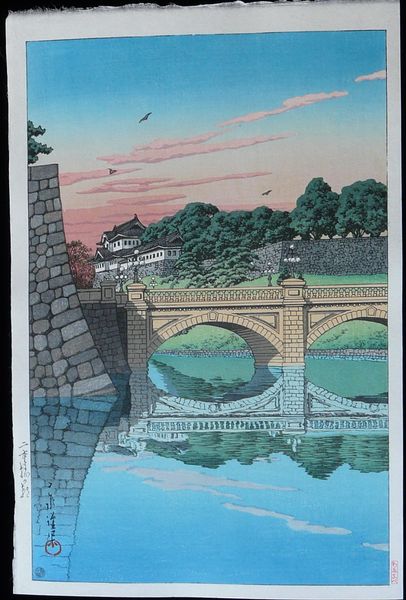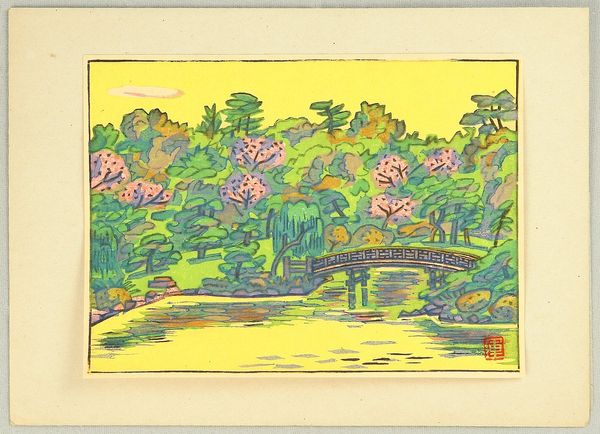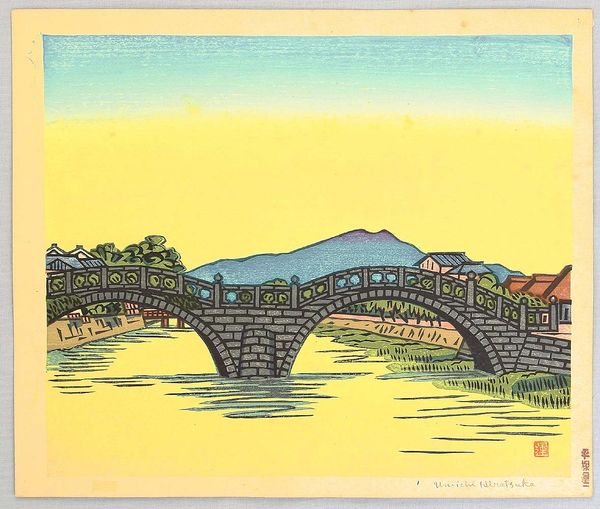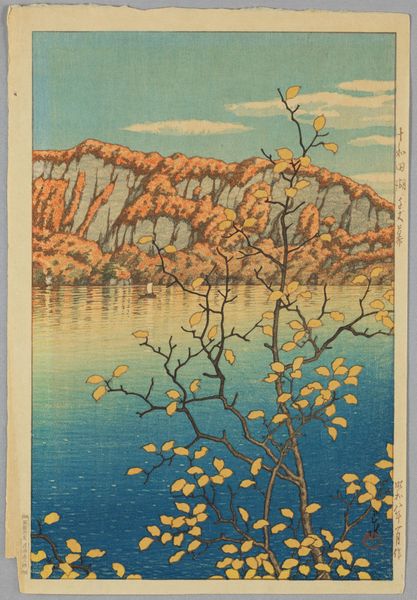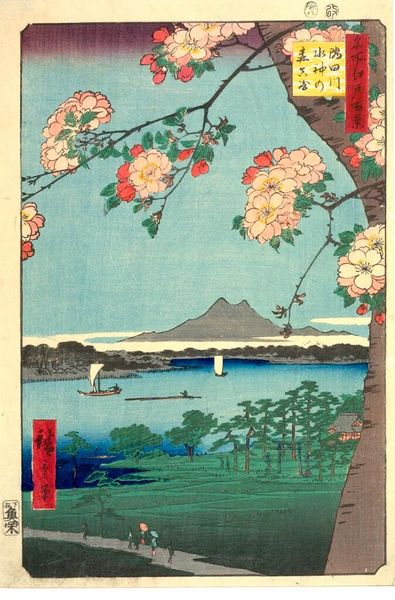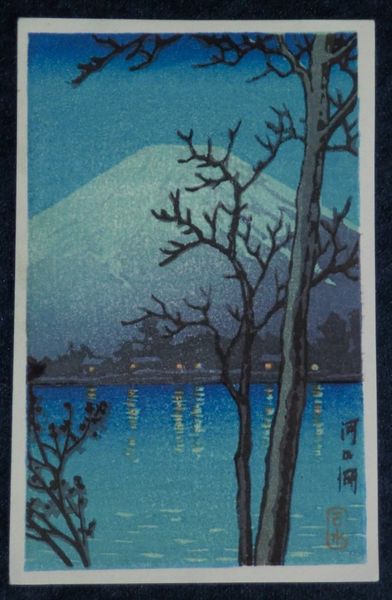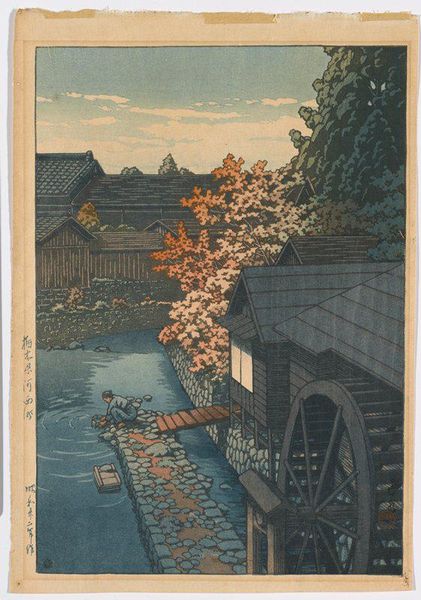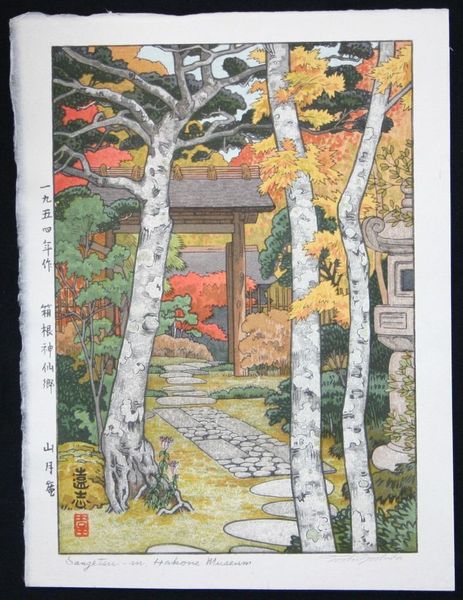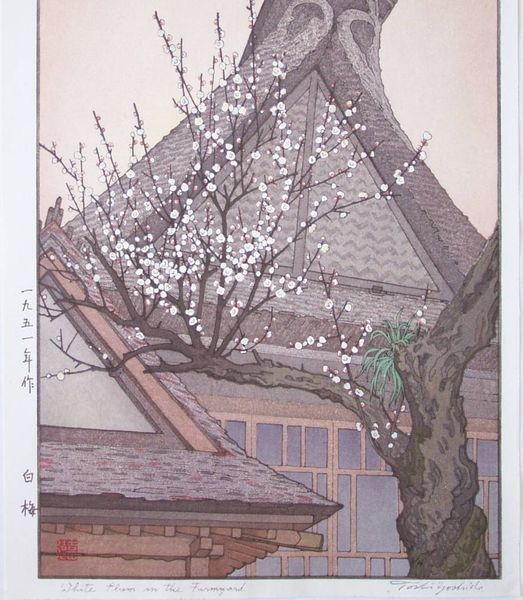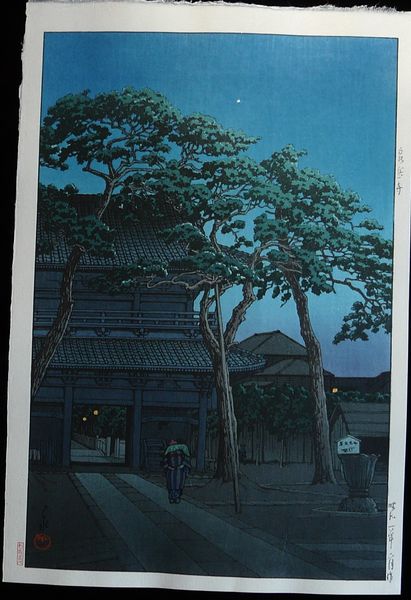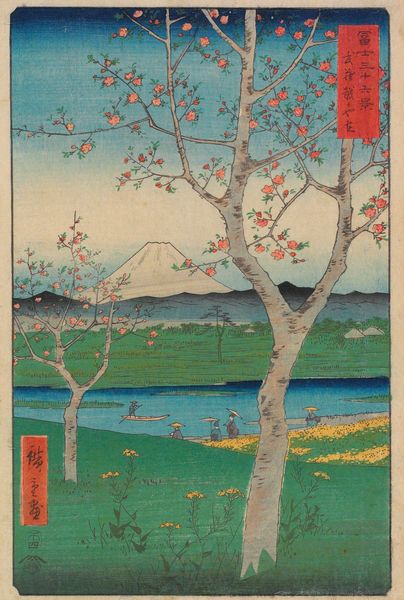
Copyright: Public domain Japan
Editor: Here we have Hasui Kawase’s "Evening at Kintai Bridge in Spring," a woodblock print from 1947. The scene feels incredibly serene, almost dreamlike, with those soft pink cherry blossoms contrasting against the strong, architectural bridge. I’m curious, what layers of meaning do you find embedded within this imagery? Curator: The Kintai Bridge itself carries significant weight. Bridges, cross culturally, represent transitions and connections. But here, set against the fleeting beauty of the cherry blossoms—sakura—it evokes a powerful sense of "mono no aware," the awareness of impermanence. That feeling is so core to Japanese aesthetics and identity. Does that resonance come through for you? Editor: Definitely, especially knowing the print was made just after World War II, it's like the artist is seeking solace in nature, reminding people of enduring beauty amidst destruction. But I'm also drawn to that lone figure in the boat. Curator: Ah, yes. The solitary boatman is also potent. He becomes a symbolic figure, a representation of humanity finding its place within the larger cosmic order. It evokes a sense of continuity and perseverance. Considering the recent war, that solitary figure suggests both fragility and resilience in the face of adversity. Note how he almost mirrors the viewer in the act of observing, but participating, too, in the painted scene. What does this symbolic doubling suggest to you? Editor: That's insightful. It creates a sense of shared humanity, a shared experience of both witnessing and navigating life's currents. I appreciate how the bridge, the blossoms, and the boatman together weave a complex tapestry of beauty, loss, and hope. Curator: Precisely. By understanding the visual language and cultural memory embedded within this print, we are better equipped to appreciate the artwork. We connect not just with the image but the enduring spirit of the people who made it and their vision of nature, humanity, and place. Editor: This has transformed the way I view this artwork! It is more than a landscape print, it’s a meditation on time and cultural identity.
Comments
No comments
Be the first to comment and join the conversation on the ultimate creative platform.
